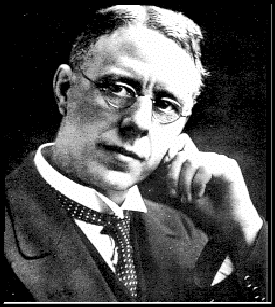



26th July 2008

Brearley invented stainless steel as a way of improving
the quality of gun barrels. He had been asked to help
reduce the amount of corrosion occurring when rifles
were fired. Combustion, moisture and the gases
produced as the weapons discharged all combined to
corrode the inside and reduce the efficiency of the guns.
He was born in Sheffield - historically one of the main English steel making and steel producing towns. With such a a large commercial involvement there was a great need to develop new materials and Brearley worked in the laboratories of Thomas Firth & Co of Sheffield
the quality of gun barrels. He had been asked to help
reduce the amount of corrosion occurring when rifles
were fired. Combustion, moisture and the gases
produced as the weapons discharged all combined to
corrode the inside and reduce the efficiency of the guns.
He was born in Sheffield -
Iron atoms – which of course are the main component of steel can form into several different lattice structures and the configuration into which they shape themselves gives different properties to the materials. The molecules that interact with the surface of materials must be able to fit into suitable gaps in the lattices and elements can be used in a ‘designer-way’ to restrict this interaction. The process of Chromium plating for instance reduces the available spaces for oxygen molecules to interact with a lattice of iron molecules. It is this understanding of material properties that now allows the manipulation of alloys. In Brearley’s time, as now, there may always have been the fortunate experimental combination – followed by astute observation – on which more detailed work can be built. It is perhaps not surprising therefore that the addition of Chromium can affect the properties of what might otherwise be a totally different material.
He tried adding a variety of other metals to create a steel alloy that had better resistance and knew of the effect that adding chromium to steels had – this was already being used in the manufacture of aeroplane engines and Brearley found one ‘alloy that was difficult to examine microscopically because the etching processes used to prepare the samples for examination were far less effective than usual – …. surely an alloy with better corrosion resistance !. Stainless steel now has around 12% of Chromium added – so how does this make a difference ?
Inventors & Inventions
IF IN DOUBT ASK !!!!
1871 - 1948


